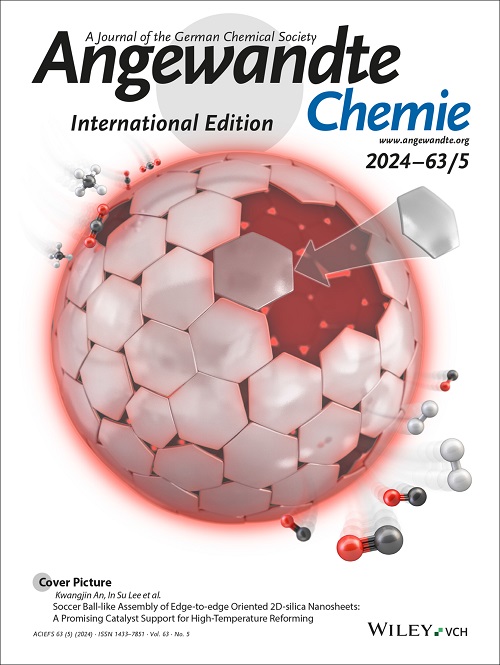A Chlorine-Resistant Self-Doped Nanocarbon Catalyst for Boosting Hydrogen Peroxide Synthesis in Seawater
IF 16.1
1区 化学
Q1 CHEMISTRY, MULTIDISCIPLINARY
引用次数: 0
Abstract
Developing seawater-compatible hydrogen peroxide electroproduction technologies is crucial for advancing marine resource utilization in coastal regions. However, designing efficient and highly stable non-noble metal catalysts for two-electron oxygen reduction reaction in seawater environment remains a challenging task due to the corrosive and toxic nature of chloride ions (Cl-). Herein, we present, for the first time, a novel nitrogen and oxygen self-doped defect-rich nanocarbon (NO-DC700) catalyst, derived from silk fiber, which addresses these challenges with low toxicity, cost-effectiveness, and high adaptability. The obtained NO-DC700 catalyst demonstrates an impressive H2O2 production rate of up to 4997 mg L-1 h-1, a high Faradaic efficiency of 96.5%, and produces 4.3 wt.% H2O2 after 20 hours of stable operation, placing it among the highest-performing catalysts reported in neutral electrolytes. Theoretical calculations reveal that NO-DC700's superior 2e- ORR performance is due to the synergistic effect of graphitic nitrogen and C-OH, which inhibits Cl- adsorption and promotes *OOH adsorption. Additionally, integrating 2e- ORR with Fenton-like technology enables rapid degradation of organic pollutants and effective inactivation of seawater algae, offering significant potential for mitigating coastal eutrophication and red tide pollution. This work provides valuable insights into H2O2 electrosynthesis in seawater solution and promises advancements in ocean-energy applications.用于促进海水中过氧化氢合成的耐氯自掺杂纳米碳催化剂
开发与海水兼容的过氧化氢电生产技术对于促进沿海地区的海洋资源利用至关重要。然而,由于氯离子(Cl-)的腐蚀性和毒性,在海水环境中设计高效且高度稳定的非贵金属催化剂进行双电子氧还原反应仍然是一项具有挑战性的任务。在此,我们首次提出了一种新型氮氧自掺杂富缺陷纳米碳(NO-DC700)催化剂,该催化剂源自丝纤维,可解决这些难题,且毒性低、成本效益高、适应性强。所获得的 NO-DC700 催化剂的 H2O2 产率高达 4997 mg L-1 h-1,法拉第效率高达 96.5%,稳定运行 20 小时后可产生 4.3 wt.% 的 H2O2,是中性电解质中性能最高的催化剂之一。理论计算显示,NO-DC700 优异的 2e- ORR 性能得益于石墨氮和 C-OH 的协同效应,它们抑制了 Cl- 的吸附,促进了 *OOH 的吸附。此外,将 2e- ORR 与类芬顿技术相结合,可快速降解有机污染物,有效灭活海水藻类,为缓解沿海富营养化和赤潮污染提供了巨大潜力。这项研究为海水溶液中的 H2O2 电合成提供了宝贵的见解,有望推动海洋能源应用的发展。
本文章由计算机程序翻译,如有差异,请以英文原文为准。
求助全文
约1分钟内获得全文
求助全文
来源期刊
CiteScore
26.60
自引率
6.60%
发文量
3549
审稿时长
1.5 months
期刊介绍:
Angewandte Chemie, a journal of the German Chemical Society (GDCh), maintains a leading position among scholarly journals in general chemistry with an impressive Impact Factor of 16.6 (2022 Journal Citation Reports, Clarivate, 2023). Published weekly in a reader-friendly format, it features new articles almost every day. Established in 1887, Angewandte Chemie is a prominent chemistry journal, offering a dynamic blend of Review-type articles, Highlights, Communications, and Research Articles on a weekly basis, making it unique in the field.

 求助内容:
求助内容: 应助结果提醒方式:
应助结果提醒方式:


